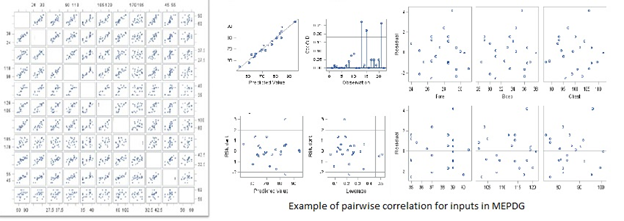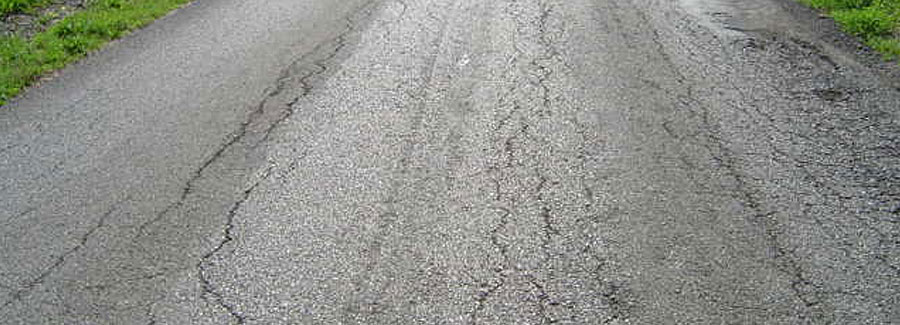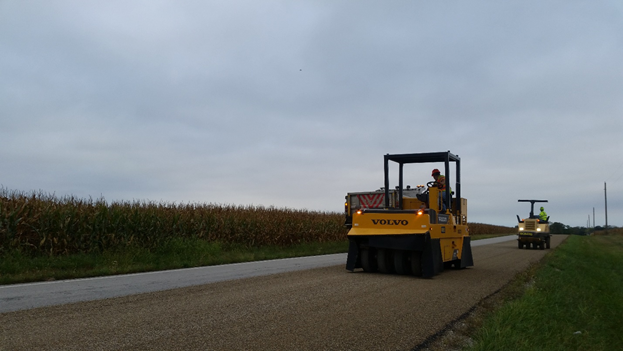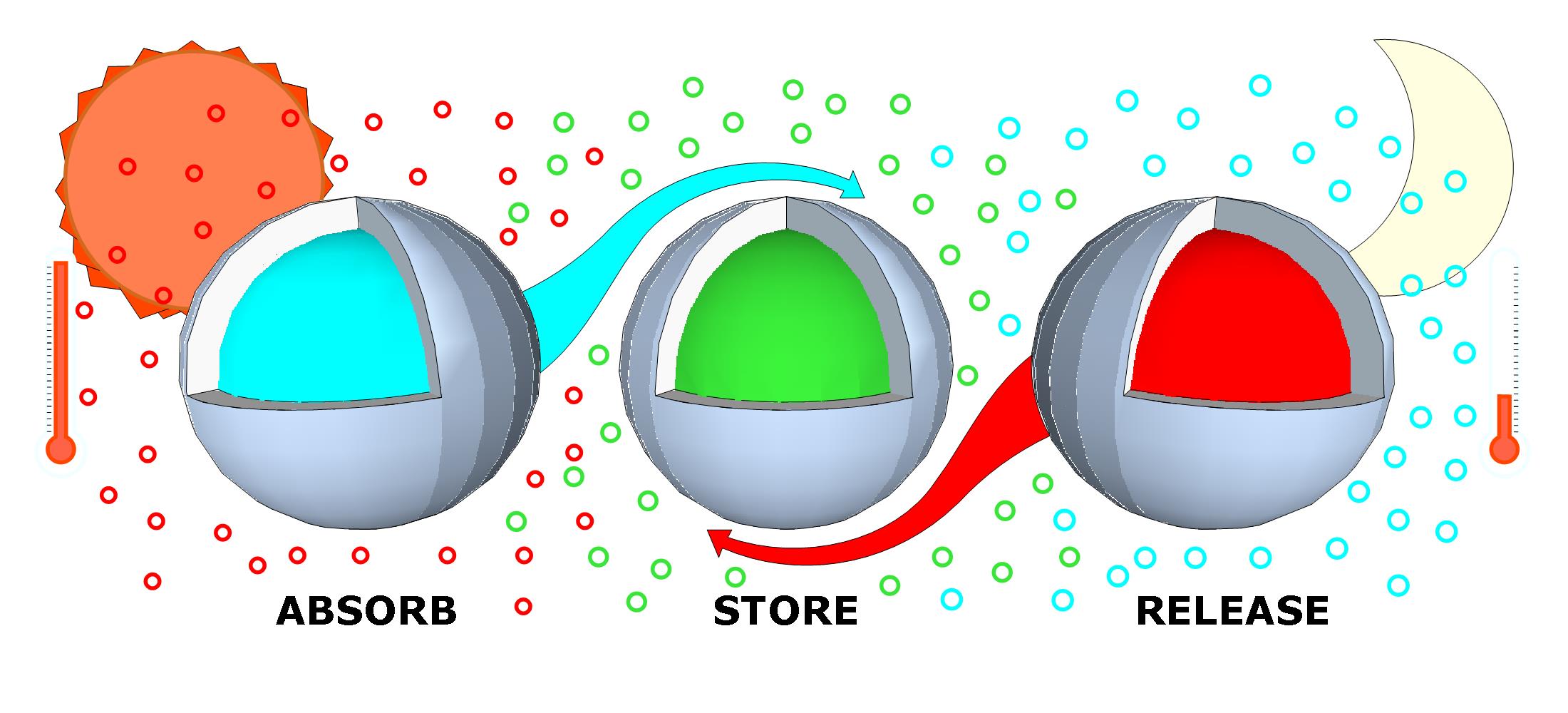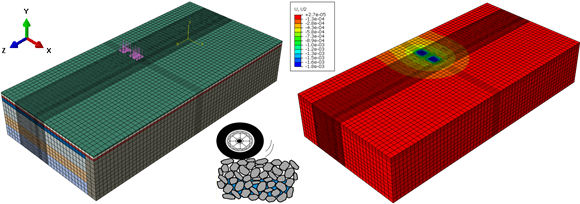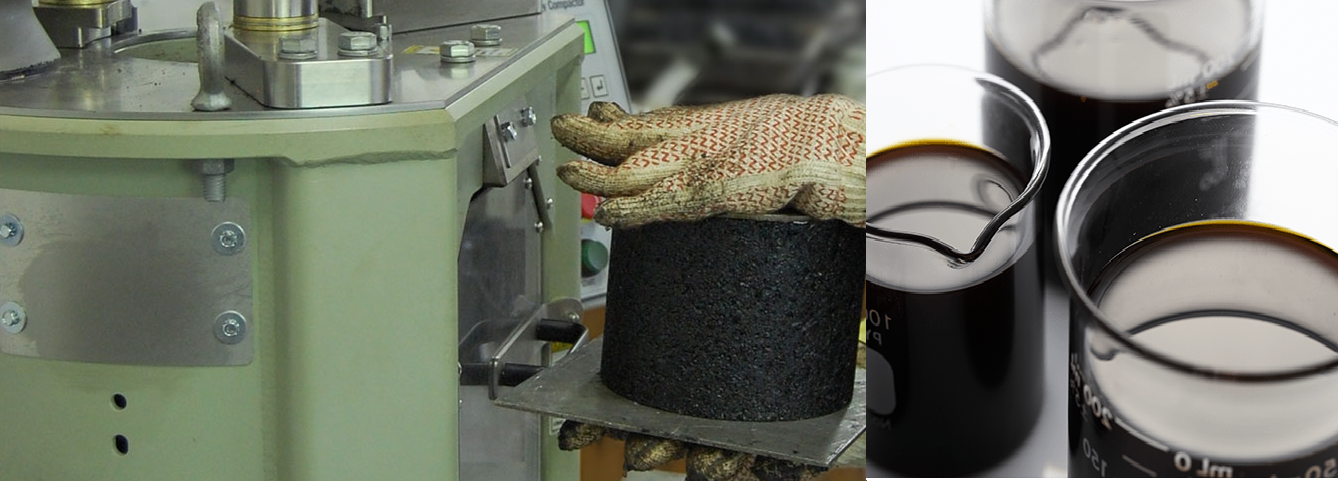1:Rutting Evaluation of Full-Depth Flexible Pavement Using Accelerated Pavement Testing
A Mid-depth Profile Monitoring System (MPMS) was also developed to investigate the rutting behavior of flexible pavements. The MPMS is able to capture the pavement layer-wise deformation with millimeter accuracy.
2: Sensitivity Analysis of Design Inputs for Mechanistic-Empirical Pavement Design Guide (MEPDG)on Flexible Pavements for Low-Volume Roads
The main interest of this study is to perform a sensitivity analysis to determine the sensitivity of each input parameter for the MEPDG based on local conditions in Indiana. Since gathering data for input parameters can be very demanding, the results of this study will help with the implementation of the MEPDG. Data collecting process can be done more effectively by directing the effort to the most sensitivity design inputs, thus reducing costs of pavement design and construction.
3: Method for Quality Control Assessment of Statewide Pavement Surface Evaluation Ratings Performed by Local Agencies
4: Quantifying Asphalt Emulsion-Based Chip Seal Curing Times Using Electrical Resistance Measurements

5: Investigating the Potential to Use Phase Change Materials (PCM) to Store Heat in Asphalt and Layered Pavement Thereby Reducing the Need for Anti-Icing
The removal of snow and ice from the transportation infrastructure is costly. Common practices for removing them from the infrastructure include the use of snowplowing, deicing chemicals or both. These methods are costly, have environmental impact, and can be labor intensive. This project examines the role that phase change materials (PCM) may have in storing heat in asphalt pavements in an effort to delay and reduce the decrease in pavement surface temperature.
6: Investigating the Need for a Drainage Layer in Flexible Pavements
Moisture intrusion can have a catastrophic effect on flexible pavement performance. As such, it is important to remove moisture as quickly as possible from flexible pavements, especially to avoid allowing moisture into the pavement subgrade. As the subgrade moisture content increases, so will the likelihood of pavement failure as the subgrade softens or frost action occurs. Given the damage potential of moisture intrusion, in the 1990’s the Indiana Department of Transportation adopted a flexible pavement drainage system that includes an open-graded asphalt mixture as a drainage layer connected to edge drain collector pipes in order to remove moisture from the pavement system. However, over the intervening two decades, flexible pavement materials and construction practices have changed dramatically. Today, in-place field densities achieved during construction make asphalt mixtures less susceptible to moisture intrusion than their 1990’s counterparts.
Given the challenges involved with producing and placing open-graded asphalt mixtures used for drainage layers, their increased cost, the changes to the materials and construction specifications, and their reduced overall structure capacity, the objectives of this research were to evaluate the effectiveness of flexible pavement drainage systems produced using currently specified materials and construction practices and to determine, given the newer specifications, if the drainage system is still needed in flexible pavements.
Preliminary finite element modeling results indicate lower subgrade saturation in flexible pavements containing a drainage system, while the subgrade remains fully saturated for those without a drainage system.
Coupled Diffusion/Deformation Analysis will be done to investigate the mechanical performance of flexible pavements drainage system.
Given the challenges involved with producing and placing open-graded asphalt mixtures used for drainage layers, their increased cost, the changes to the materials and construction specifications, and their reduced overall structure capacity, the objectives of this research were to evaluate the effectiveness of flexible pavement drainage systems produced using currently specified materials and construction practices and to determine, given the newer specifications, if the drainage system is still needed in flexible pavements.
Preliminary finite element modeling results indicate lower subgrade saturation in flexible pavements containing a drainage system, while the subgrade remains fully saturated for those without a drainage system.
Coupled Diffusion/Deformation Analysis will be done to investigate the mechanical performance of flexible pavements drainage system.
7: Soybean-based Asphalt Rejuvenator (Phase II)
This research focuses on laboratory mixture evaluations of RAP combined with soybean-based rejuvenator. Previous work has already shown that soybean-based products can be readily blended with asphalt binders and soften the binders. In phase I , an investigation on a soybean-based product, SAS is reported, specifically for its abilities to rejuvenate aged asphalt binders. Phase II research quantifies how well the rejuvenator works on the asphalt binder when it is added directly to the RAP. In practice, RAP is milled from the road and then re-incorporated into new asphalt mixtures. The goal is to develop a feasible guide to instruct how to use a soybean-based rejuvenator in RAP recycling in road construction.


